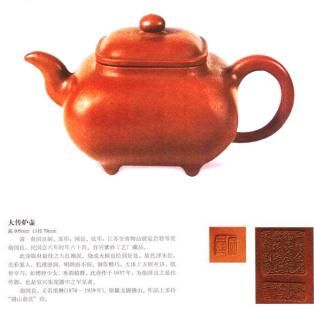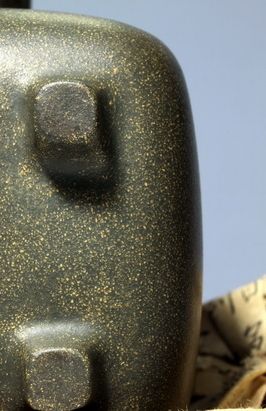there's still "shi-huang" from zhao zhuang that is still being used up to today, but the quality and processing in comparison to the early generation one is unknown. from my sources, they term it shi-huang because of its color and that color starts fading into a pale tone upon air exposure over time. both materials can be fired to similar color tones, but with texture differences if one can tell.chrl42 wrote: Just for a discussion sake, there are still Shihuang being used, they are just not Zhaozhuang one, but Xiaomeiyao etc..
there is also shi-huang in japan, sado such as nosaka clay, but the properties and firing appear to have limited its development and popularity.
chuan bu, pu dong hong ni largely filled in the products of the mid 60-75 period, the typical CR hong ni. the granularity and texture appears to have disappeared closer to the green sticker period. i've been collating internal pictures of this. the xiao hong ni that is also used to coat the outside of pots in the nei zhi wai hong types, can still be seen to persist in some nei zhi wai hong pots of the early 80s, but a full "vessel" of the material from this late period, i've not come across yet. huang long shan nen hong ni, da hong ni with a softer and finer texture seem to be the space filler in the later days.From my understanding, small batches of Chuanbu Hongni have been used during 7~80s (green sticker period), and filled the rest of Hongni products during later days (up to 97). Iron oxide was added, somewhat lacks in porosity to earlier Hongni.
iron oxide addition like some potters would have mentioned, may present some kind of "fluxing" effect.. the whole ware becomes like a nice amalgam.
this one needs a debate,
First, Niangaotu the clay was invented during the CR, they invented it to test for making 'slip-cast' teapots, yet failed. Left clays were used to make into teapots during 82~85. Niangaotu was 'mixed' clay of Zini, Hongni etc then processed into quite smaller particle, Niangaotu has no porosity, but incredible in seasoning.
i'm not unaware of this account. there are at least two to three sayings/accounts on niangaotu.
one common account is the saying that niangaotu was born because it was discovered as a layer/strata in huanglong shan, and since the layer was in close proximity with zini and that these layers dont have clear cut boundaries, there is a gradient and some mixing. the material takes on an intermediate color between the red of hongni and the brown purple of qingshui zi.
the other account is that niangao clay was created due to a failed experiment for slip casting where they tried during the mid 60s, early CR period to grind hong ni down to 120mu. but they found that it was too soft and unstable for slip casting and it was abandoned. it was later mixed with qing shui ni to be made into pots around '82.
the third account was that it is a variant of the hong qing shui ni that appeared in the 70s, i.e. hongkong xiang xing ordered pots in the end 70s came in such a material. this hong qing shui material of the 70s is treated/accepted by the taiwanese for now as part of hong-ni. the texture is excellent, unlike qing shui ni proper, where the gritty-ness and the sandyness doesnt give it as nice a feel.
i wouldnt think that nian gao is "non-porous" it doesnt act like glass, its just that yixing clay has multiple porosity,the primary porosity comes from the particle nature, aluminium oxide particles etc have their own porosities. secondary porosity comes from how the clay is processed, hammered, compacted etc. nian gao loses its primary porosity as much of the particles have been ground down, but the fact that it seasons very well, it excels in the secondary porosity. i've taken a few pots into the lab for surface characterizations and have found some interesting results, especially on the contact angle goniometry. still lacking a few scanning electron micrographs as i'm not sure if i am willing to sputter gold/platinum on the surface for imaging.
he did show a huanglong shan hong ni mine despite not clearly disclosing its precise location. these are the few that produced hongni (even some "zhu"), including one of them that produced the "da hong ni"on a general agreement, Huanglongshan Hongni's characteristics are known to be 'texture as Zini and color as Hongni', this characteristic can be traced back to as early as Ming dynasty to Kangxi redwares, Daoguang~ROC Hongni and Factory-1 'Fen Tai' and 'Hong Zini' Shuipings.
Zhu Zei-wei wrote the details about the clay mining and locations in '宜兴紫砂矿料', looks like there were more than 3 mines in Zhaozhuang areas operated since the 50s, yet he didn't specify the Huanglongshan Hongni mine, according to his book, Huanglongshan Hongni comes from Baoshan (Qinglongshan area) but he didn't credit in which year they started to mine Baoshan clays.
It is VERY technical and difficult subject, I think no one can be 100% affirmed to say unless he/she was who did participate making clay in Factory-1. Even experts opinions differ a lot on this.
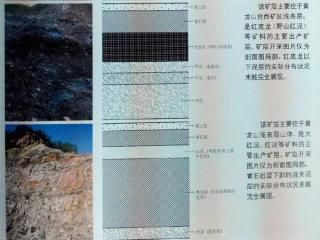
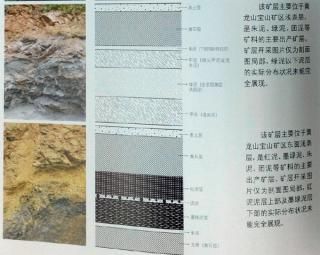
i think you have to read more carefully what i wrote. so far in all the old literatures from ming to early qing, mid qing, color classification is still done base on its final appearance, very much less on the exact clay type. i wonder if up to ROC was there a description of DHP clay used?And you think these are the same clays as Qing dynasty DHP? Did they use iron oxide during mid-Qing ?
Give an example of Qing dynasty pot made of Da Hong Pao...
1.Han Qi-lou indicated Shao You-ting (no book around me, could be another Shao, too)'s pot as DHP, he said the effect had come from a very special location in the kiln, special air flow and firing gave the pot very pretty color..but the percentage of being so can be quite rare as it was a coincidental effect
2.ROC's famous Yu Guo-liang's DHP pots are reported to be quality-Shihuang had been mixed in.
i'm aware of your references to han qi lou's book, which should be one of his hall mark publications, Zi Sha Hu Quan Shu. I have the soft copy and have gone through it before. There are two "Da Hong Pao" items in it, one being a Yu Guo Liang four legged Da Zhuan Lv, the other being a qing dynasty Shao Zheng Lai. The description of the Qing Pot is that the pot name is "Da Hong Pao", and there is no mention on the clay being DHP clay, just that there were special kiln conditions that caused the color to become like that.
In Gu Jing Zhou's appraisal of the same Yu Guo Liang four legged Da Zhuan Lv pot in a separate publication, he wrote that the pot was made from the best selected Da Hong Ni, and did not use the word Da Hong Pao.
so it seems that by Han Qi Lou's colloquial and interchangeable use of the words Da Hong Ni and Da Hong Pao end up creating legendary status?
in zhu zhe wei's book, he did cover Da Hong Ni, and similarly wrote that Da Hong ni was Da Hong Pao Ni.
refer to :
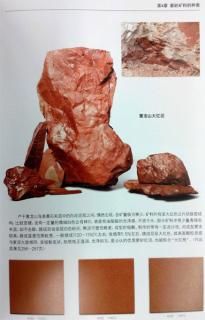
regards.
